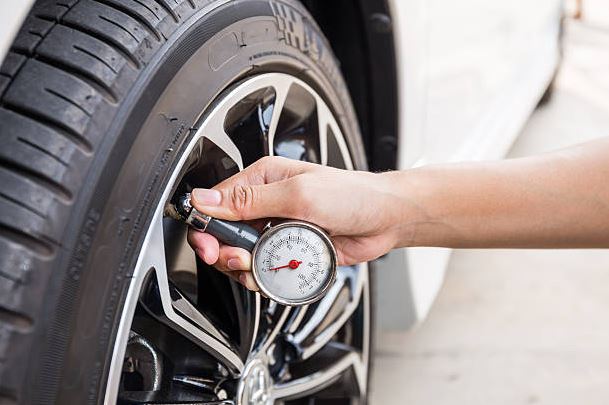Your tire pressure is the inflation pressure specified for the optimum performance of your car by the designed engineers and manufacturers. This pressure should be properly checked regularly, especially during your maintenance and routine check, since it supports the car’s weight and propels the vehicle forward.
The tire’s pressure is usually indicated on the driver’s door frame. In cases where you can’t find it there, your best bet is to have a check for a placard inside the fuel lid area or your glove box.
One of the reasons you check your manufacturer’s guidelines for your tire pressure may be found in the areas above or inside your manufacturer’s manual instead of on your tires. The pressure specified on your tires are maximum pressure the tire can run on, which is different from the cold pressure manufacturers specified; this is the ideal pressure when heat dissipation has been eliminated.
Cold pressure can only be taken when the tires haven’t been in working conditions for about three hours.
How To Determine Your Current Tire Pressure?
To determine your tire’s current pressure, you can go through the following means:
- Using gauge pressures: You can use gauge pressures to check your tires before driving to work or the store down the street in the morning to take the cold pressure so you can quickly fix any defects or injuries on tires. Using a gauge pressure during routines check is also a smart move; always remember that a stitch in time saves nine.
- The Tire Pressure Monitoring System (TPMS): If the model of your car comes with the TPMS, you can easily read out your tires’ pressure on the vehicle’s dashboard. But if your car doesn’t, you may have to stick with the method above or visit a professional, especially your Goodyear Duratrac, to help you check out the condition of your tires.
What Happens When The Incorrect Tire Pressure Is Used?
Using incorrect tire pressure, such as pressure not specified by the manufacturer, is similar to violating your doctor’s instructions.
Two things can be said of such tires, not in the specified cold tire pressure: they can be said to be under-inflated or over-inflated. These conditions affect the tire’s lifespan, load-carrying capacity, and optimum performance.
When tires are under-inflated, the adverse effects are poor fuel economy, poor load-carrying capacity, poor vehicle handling, and unusual tire tread wearing. At the same time, the adverse effects are poor vehicle handling, harsh ride, and lesser grip with unusual surfaces like wet surfaces since this has reduced the force-area ratio and vehicle pressure.
How Best Should I Maintain My Tire’s Pressure?
The first and most advice is to keep to a proper routine and observe your car before driving out in the morning and after daily use.
These days, vehicles have an embedded tire pressure management system (TPMS) that ensures that you can easily check your tire pressure over your dashboard. For a car model that doesn’t have this TPMS, you must check your tires manually or visit an authorized Goodyear Duratrac professional to run a check.
When you notice any wear or tear fix on time or have difficulties moving in a straight path, you may have to check to ensure your car’s wheels are balanced and aligned.

